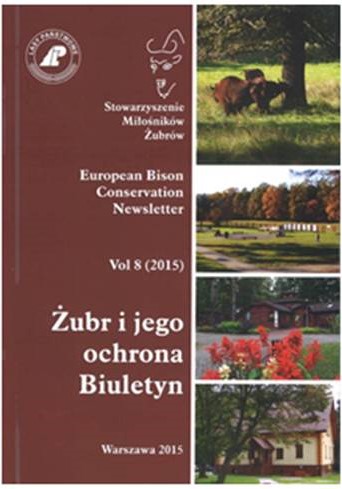Similarities in foraging patterns of wisent, red deer and various breeds of European primitive horses
Keywords:
diet, bark stripping, foraging activity, habitat selection, competitionAbstract
The aim of this paper was an attempt to analyse similarities in foraging patterns of three herbivorous species: wisent, red deer and primitive horse, occupying similar habitats in Europe. Regarding foraging patterns, the wisent presents many similarities to both compared species. Main similarities with the red deer are related to the structure and physiology of alimentary tract, foraging activity, requirements regarding food quality (better digestible), and habitat selection, as well as in diet composition (woody plants content and plant species composition in the diet) and debarking patterns. Primitive horses on the other side present similar feeding type, diet contents and debarking activity. Possibilities of wisent’s population development are high however potential conflicts over the use of food resources may occur, involving other species, such as the red deer and primitive horses. Lower body mass of red deer and horses and specific features of digestive tract of horses give them some advantages in the competition between them and the wisent.
Downloads
Published
How to Cite
Issue
Section
Categories
License
Copyright (c) 2015 Daniel Klich

This work is licensed under a Creative Commons Attribution 4.0 International License.





